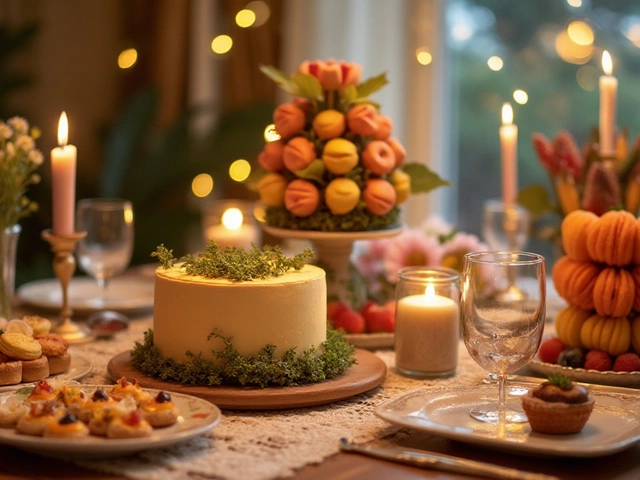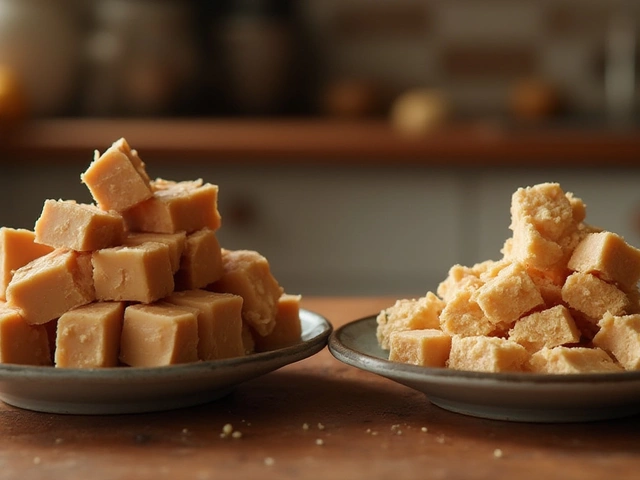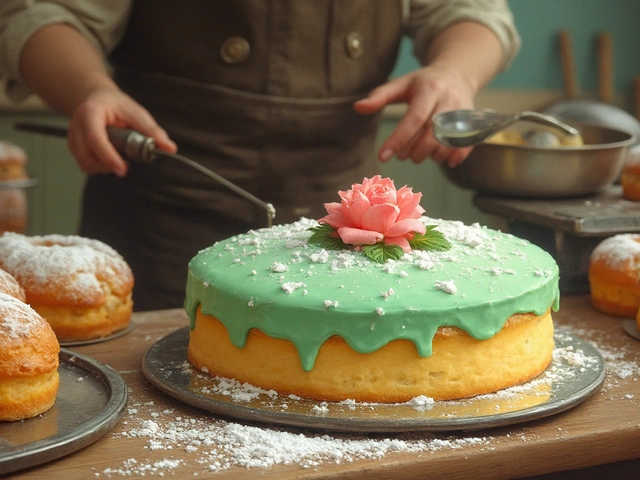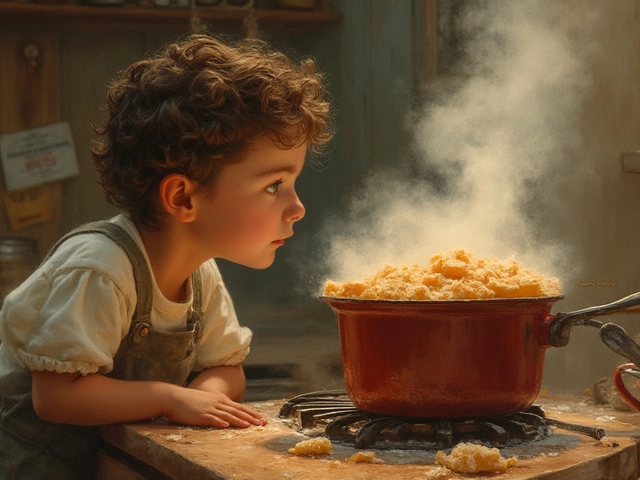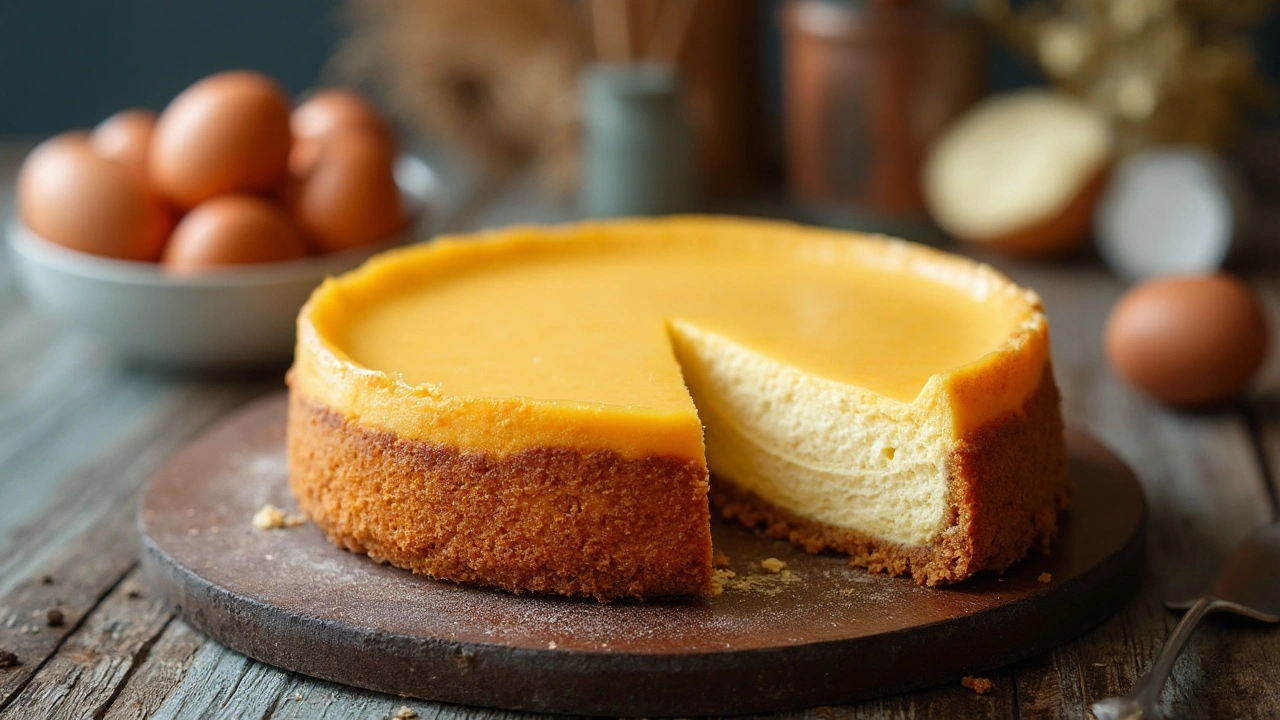
You might feel daring, rebellious, or just a little absentminded, but plenty of bakers end up asking: what if you forget to add the egg to your cheesecake? Maybe you’re baking with a vegan friend, someone’s allergic, or you simply ran out and the shops have closed. But you want cheesecake, not disappointment. If you’re expecting that dreamy, creamy bite with a slight wobble—well, eggs have a bigger say in that than you might think. The real surprise? A cheesecake without egg is technically not the end of the world, but the change is more dramatic than swapping out milk for almond. Let’s see what truly happens when the egg gets left behind, and why your fork might notice the difference before you do.
What Eggs Do in Cheesecake: The Science Behind the Creamy Texture
Eggs are often overlooked as silent heroes in cheesecake. The creamy filling owes much of its signature structure and richness to these fragile little wonders. They’re more than just an old habit—eggs hold things together, they keep your cheesecake moist, and they’re responsible for that custardy, indulgent feel everyone adores.
So what’s actually happening? Eggs supply both fat and protein, crucial for the cheesecake’s lush mouthfeel and shape. The yolk, packed with fat, lends the cheesecake its velvet finish, keeping it from coming out dry or crumbly. The whites offer structure, firming things up when baked so the filling doesn’t just collapse under its own weight or spill out when sliced.
The baking process is where eggs show off their magic. As your cheesecake mixture warms, the proteins in the eggs start to unravel and bond, forming a network throughout the batter. This network gently traps moisture and creates that famous silky-smooth texture—firm enough to slice, but soft enough to melt on the tongue. This delicate set is the result of cooking eggs slowly and evenly, which is why recipes always nag you about not overbaking. If the oven’s too hot or you cook them too quickly, these proteins can clump up and force the water out, making a dense and grainy cheesecake, or causing cracks so wide you could call them canyons.
Eggs also act as an emulsifier. Ever wondered why cheesecake never feels greasy, even though it uses so much cream cheese? Lecithin in the yolk lets fat and liquids blend seamlessly, giving that gorgeous homogenized filling. No egg? That means your cheesecake starts to lose its cohesive balance. The filling might separate, or taste oddly gritty. Basically, you can certainly still make cheesecake without eggs, but it’s a change not just in taste, but the whole experience.
There’s another emotional factor. For some, the taste of traditional cheesecake is practically tied to memories—family birthdays, cafe treats, or the thrill of a holiday bake. Those familiar flavors are shaped in part by eggs. It may sound dramatic, but foods linked to nostalgia rely on those key ingredients, and eggs are deeply woven into the DNA of classic cheesecake.
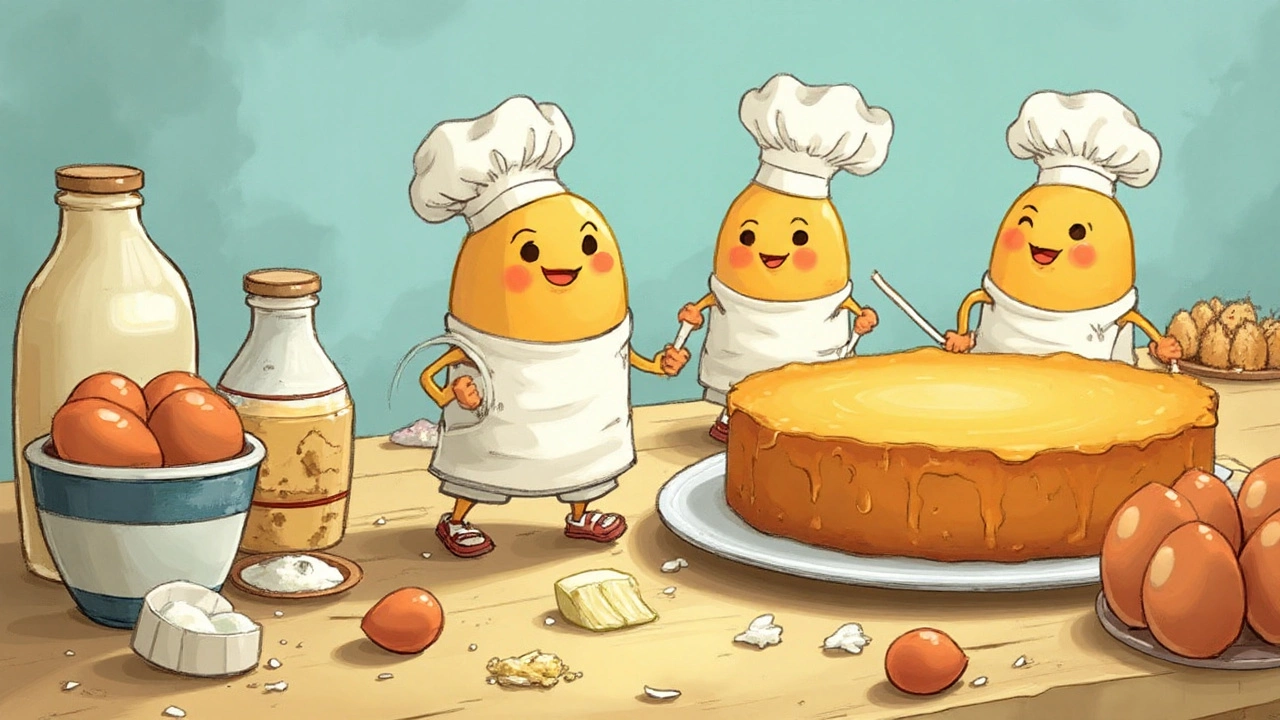
How Cheesecake Changes Without Eggs: Texture, Flavor, and Structure
So, you wander into the world of eggless cheesecake. The first thing you’ll notice? Texture. Without eggs, the cheesecake filling loses that iconic silkiness. It often turns out more like a no-bake dessert—think mousse, pudding, or even a firm yogurt vibe. It's not unpleasant, just different. In my kitchen, I tried making a classic New York-style cheesecake without an egg last summer. It set up, but I’d call the result more “creamy block” than “creamy slice.”
Eggless cheesecake tends to be softer and doesn’t always hold its shape once sliced. If you’re making a tall, thick American-style bake, you might be disappointed; the slices sometimes sag or even puddle on the plate. The filling can also weep liquid, especially if you overmix—which is pretty easy to do when you’re trying to get everything to bind without the natural glue of eggs. Cutting clean slices becomes a challenge and the dessert’s visual presentation takes a hit.
About flavor: without the richness of egg yolks, the taste is definitely lighter, almost milkier. Cheesecake’s lush flavor comes from the combo of cheese and egg: one brings the tang, the other the creamy luxury. Leave out the egg, and that classic hint of custard vanishes. The sweetness comes forward, while the subtle savory note from eggs fades away. I brought one of these eggless creations to a picnic on Brighton beach with Jonas, and the verdict from our friends was pretty unanimous—good, but missing the “oomph.”
The chemistry behind it is simple. Without eggs’ protein network, you’re left relying on just cream cheese (and perhaps a bit of flour or cornstarch) to set everything. Sometimes, bakers try to make up for this with more thickener or by using heavy cream, but the result is often denser or more gelatinous than classic cheesecake. It may become more similar to a no-bake variety, which relies on the fridge instead of the oven to firm up. That’s not a tragedy if you love that style, but it’s definitely not the same dessert you’d get at a New York deli counter or most London bakeries.
Let’s talk shelf life. Classic cheesecake firms up as it cools, but eggless versions may continue to soften, especially at room temperature. If you leave it out at a summer brunch, you might discover it becomes quite sloppy before dessert time rolls around. Storage is best in the coldest part of your fridge, in a well-sealed container. Don’t trust it for a bake sale or as a make-ahead showpiece unless you’ve had practice with your particular eggless recipe.
That being said, eggless cheesecake isn’t all doom and gloom. It actually shines for folks who are allergic to eggs or want a vegetarian or vegan option. And if you like experimenting, it’s a fascinating kitchen challenge. Just don’t expect it to fool anyone as a spot-on replacement for the original. The secret to success? Temper your expectations, or try out a few tweaks to get closer to that classic texture and taste. And if all else fails—call it a creamy dessert, not “cheesecake,” and enjoy it guilt-free.
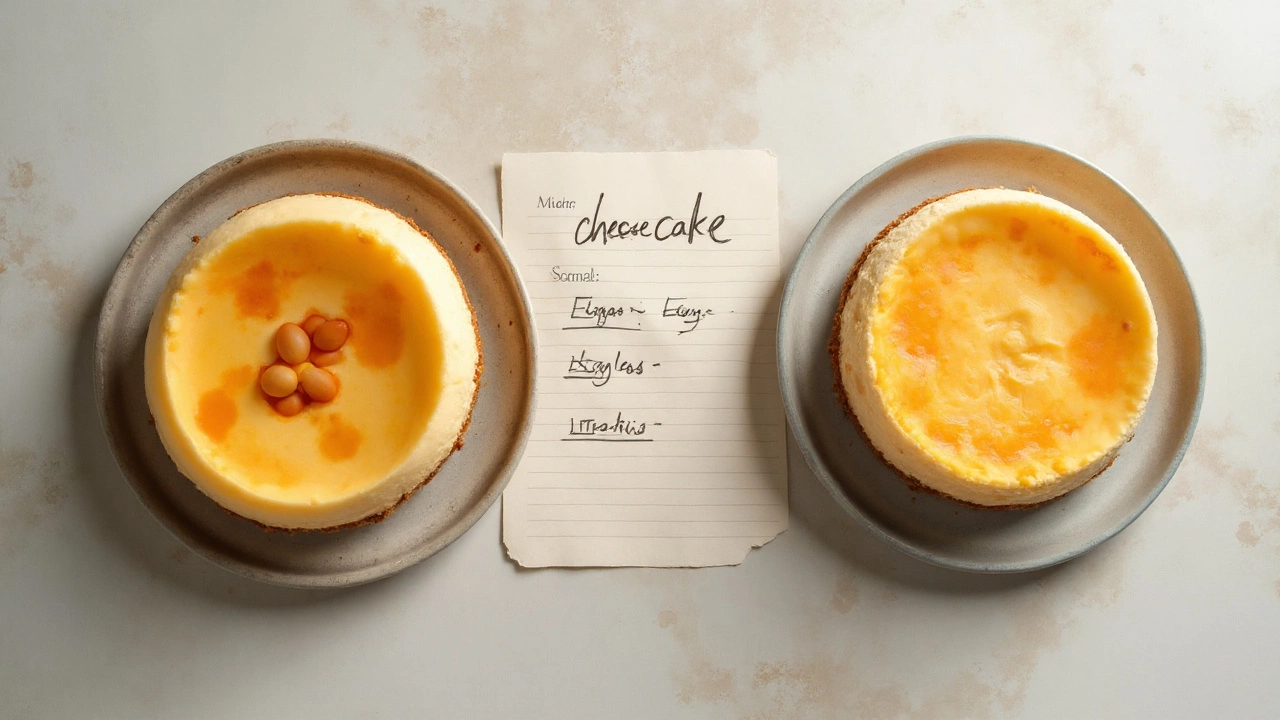
Egg Substitutes and Tips for Making Eggless Cheesecake Work
If you want your eggless cheesecake to hold together and taste good, you have to get creative. Luckily, it’s not impossible—far from it. There’s a whole world of substitutes and tricks out there that will help you fake it ‘til you bake it.
The first and easiest alternative: cornstarch or all-purpose flour. Adding a tablespoon or two to your filling mixture helps it thicken up as it bakes, thanks to starch molecules absorbing liquid and forming a gel when heated. This option gives you a soft, creamy cheesecake that slices fairly well. Just don’t add too much, or your dessert will start to taste floury.
Next up—yogurt or sour cream. Both add moisture and tang, and when mixed with cream cheese, form a rich, silky filling with decent structure. For every egg you’re leaving out, drop in ¼ cup of thick yogurt or sour cream. Just whisk it in with the other wet ingredients before folding into your cheese mixture. This trick is especially popular for Japanese-inspired cheesecakes, which lean softer and lighter than the New York style anyway.
Ever tried silken tofu? I know this sounds more like health food than a treat, but in blind taste tests, silken tofu works wonders as an egg swap. Blend it until smooth and use ¼ cup per egg, mixing thoroughly for a uniform texture. It’s neutral in flavor, adds creamy body, and helps everything set up nicely. I brought a tofu-based cheesecake to my book club in June—nobody guessed the secret ingredient, even after the big reveal.
A quick fix you might have in the cupboard: applesauce or mashed banana. Each one is a classic egg replacer, especially for baking. While they shift the taste a bit (banana will always be banana!), they add moisture and help bind the filling. Use about ¼ cup for each egg you’re omitting. This works best for fruit-based cheesecakes like strawberry or lemon, where the added flavor feels purposeful, not overpowering.
For ultra-firm results, some bakers add a little gelatin (for non-vegetarians), agar-agar (for vegans), or commercial egg replacers like Ener-G. Gelatin sets up firm, but strips away that creamy, tender quality. Agar-agar is a seaweed-based powder you cook with water to activate. Both can deliver a clean slice, even when it’s warm outside. Just go slow and follow package directions—too much gelatin, and you’re in Jello territory, not cheesecake heaven.
A quick round of tested kitchen tips: Always bring your cream cheese to room temperature to avoid lumps, and whip it thoroughly with whichever binder you’re using. It pays to taste your filling before it goes in the crust—eggless batters seem blander, so consider an extra teaspoon of vanilla or a dash of lemon zest. You might need to bake a little longer on a lower temperature, since some thickeners take more time to set than eggs do.
Some of the best advice from UK home bakers is to use a water bath, just as you would with traditional cheesecake. The gentle, even heat prevents sudden temperature spikes, allowing your eggless filling to set without getting grainy or cracked. Wrap your tin in foil, pop it into a roasting tray, add hot water halfway up the sides, and bake as usual. Trust me, it makes a difference.
Ready for the wild card? If you’re feeling adventurous, try a base of cashew cream (soak raw cashews, then blend) to get richness and body even without eggs or dairy. This is a staple in vegan circles and with the right flavorings—lemon, coconut, maple—you might even win over die-hard dairy-lovers. Just be sure to chill thoroughly, since these cheesecakes firm up best when cold.
Want to skip baking altogether? Go for a no-bake cheesecake recipe, which combines cream cheese, whipped cream, sugar, and a bit of lemon juice, then chills overnight. You get a delightfully smooth, spoonable dessert without even thinking about eggs. This style was actually first popularized in the 1940s and still shows up at British family parties today—my mum has a secret recipe involving condensed milk and doesn’t use an oven at all.
The key to mastering eggless cheesecake is to accept the differences, experiment boldly, and find what works for your taste and kitchen. Watch your texture, embrace the lighter, less custardy flavor, and don’t panic if the first batch isn’t perfect. Cheesecake is forgiving—as long as you start with good cream cheese and a sturdy crust, you’ll find a version that satisfies you (and maybe Jonas, too).
>

